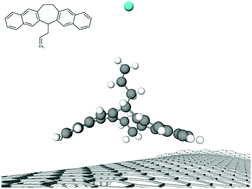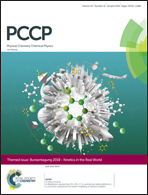Forces, energetics, and dynamics of conjugated-carbon ring tethers adhered to CNTs: a computational investigation
Abstract
The strength and nature of the interactions between carbon nanotubes (CNTs) and molecular tethers plays a vital role in technology such as CNT–enzyme sensors. Tethers that attach noncovalently to CNTs are ideal for retaining the electrical properties of the CNTs since they do not degrade the CNT surface and effect its electrical conductivity. However, leaching due to weak CNT–tether attachment is very common when using noncovalent tethers, and this has limited their use in commercial products including biosensors. Thus, understanding the fundamental mechanics governing the strength of CNT–tether adhesion is crucial for the design of highly sensitive, viable sensors. Here, we computationally investigate the adhesion strength of CNT–tether complexes with 8 different tethering molecules designed to adhere noncovalently to the CNT surface. We study the effects of CNT diameter, CNT chirality, and the size/geometry of the tethering molecule on the adhesion energy and force. Our results show an asymptotic relationship between adhesion strength and CNT diameter. Calculations show that noncovalent tethers tested here can reach adhesion forces and energies that are up to 21% and 54% of the strength of the carbon–carbon single bond force and bond energy respectively. We anticipate our results will help guide CNT–enzyme sensor design to produce sensors with high sensitivity and minimal leaching.



 Please wait while we load your content...
Please wait while we load your content...